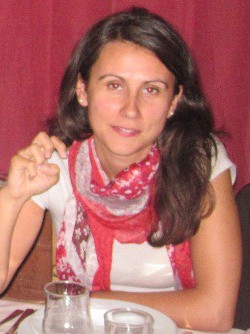abstract
Cholinium-based ionic liquids are receiving crescent interest in diverse areas of application given their biological compatibility and potential for industrial application. In this work, mono and dicationic cholinium ionic liquids as well as cholinium derivatives were synthesized and their toxicity assessed using the luminescent bacteria Vibrio fischeri. A range of cholinium derivatives was synthesized, using different amines and the correspondent brominated derivatives, through the alkylation of the amine with the halide in MeCN. The results indicate that their toxicity is highly dependent on the structural modifications of the cholinium cation, mainly related to the alkyl side or linkage chain length, number of hydroxyethyl groups and insertion of carbon-carbon multiple bonds. The data indicated that it is possible to perform environmentally advantageous structural alterations, namely the addition of double bonds, which would not negatively affect V. fischeri. Moreover, the dicationic compounds revealed a significantly lower toxicity than the monocationic counterparts. The picture emerging from the results supports the idea that cholinium derivatives are promising ionic liquids with a low environmental impact, emphasizing the importance of a careful and directed design of ionic liquid structures. (C) 2014 Elsevier Inc. All rights reserved.
keywords
FUNCTIONALIZED SIDE-CHAINS; FISCHERI MARINE-BACTERIA; AQUEOUS 2-PHASE SYSTEMS; DIFFERENT HEAD GROUPS; VIBRIO-FISCHERI; MUTUAL SOLUBILITIES; CELL-LINES; TOXICITY; IMIDAZOLIUM; WATER
subject category
Environmental Sciences & Ecology; Toxicology
authors
Silva, FAE; Siopa, F; Figueiredo, BFHT; Goncalves, AMM; Pereira, JL; Goncalves, F; Coutinho, JAP; Afonso, CAM; Ventura, SPM
our authors
Projects
Centre for Research in Ceramics and Composite Materials - CICECO (LA0011: 2013-2014) (PEst-C/CTM/LA0011/2013)
[ILTOX] Ecotoxicological evaluation and treatment of aqueous effluents contaminated with ionic liquids (PTDC/AAC-AMB/119172/2010)
acknowledgements
This work is financed by FEDER through Programa Operacional Fatores de Competitividade - COMPETE and national funds through FCT - Fundacao para a Ciencia e Tecnologia within CICECO project - FCOMP-01-0124-FEDER-037271 (Refa. FCT PEst-C/CTM/LA0011/2013), PEst-C/MAR/ LA0017/2013, PEst-OE/SAU/UI4013/2011, PTDC/QEQ-PRS/2824/ 2012 and PTDC/AAC-AMB/119172/2010. The authors also thank financial support through the postdoctoral and doctoral grants SFRH/BPD/79263/2011, SFRH/BPD/79307/2011, SFRH/BPD/88666/2012, SFRH/BD/94901/2013 and SFRH/BPD/44733/2008 of S.P.M. Ventura, A.M.M. Gal-waives, F. Siopa, F.A. e Silva and J.L. Pereira, respectively.




